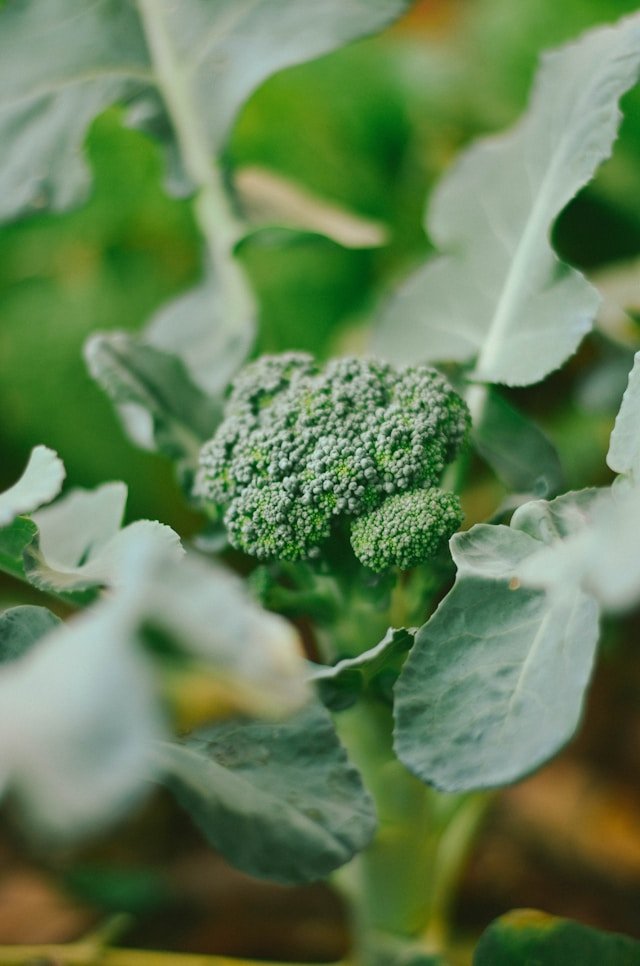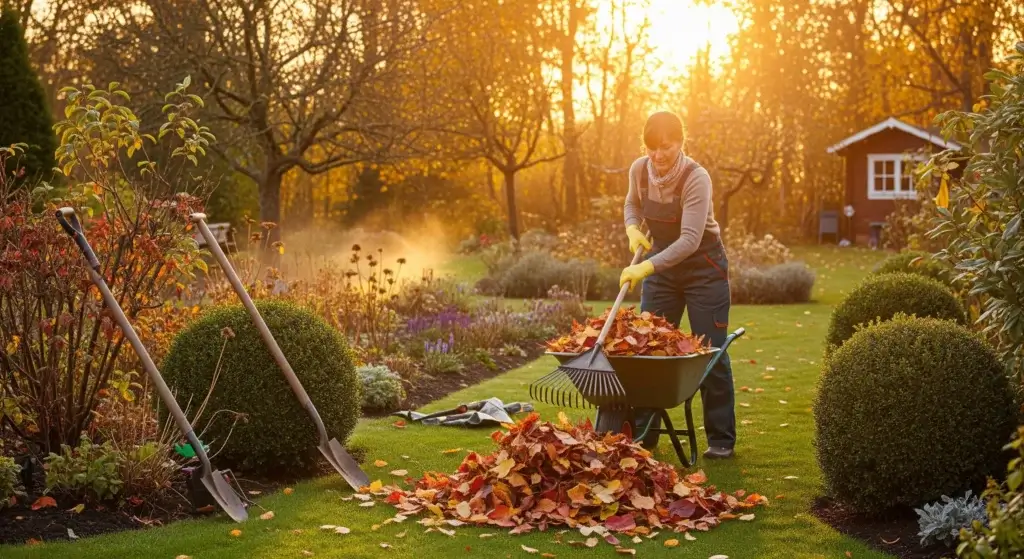
Like any plant, broccoli isn’t immune to pesky diseases that can hinder its growth and health.
Fear not, though, because we’re here to guide you through the ins and outs of common broccoli diseases and how to control them.
About Broccoli Plants
Broccoli, scientifically known as Brassica oleracea var. italica, is a proud member of the cruciferous vegetable family.
This esteemed family includes other nutritious veggies such as cauliflower, kale, Brussels sprouts, and cabbage.
Broccoli thrives in cool weather and requires well-drained, nutrient-rich soil to flourish.
It can be grown from seed or transplanted seedlings, with careful attention to spacing and watering needs.
Here are the physical characteristics of broccoli plants:
- Read also: DIY Guide: Homemade Compost for Growing Broccoli
- Read also: DIY Broccoli Row Covers: Protecting Your Garden with Solutions
Height
Broccoli is a fast-growing annual plant that typically reaches 24-35 inches (60-90 cm) in height.
Stalk
The main stalk of a broccoli plant is upright and thick, with a smooth texture and light green color. It’s hollow on the inside.
Leaves
Broccoli leaves are large and lobed, with a waxy, blue-green color. They have prominent veins and a leathery texture.
Florets
The most recognizable part of broccoli is the cluster of tightly packed flower buds at the top of the central stalk and branches.
These immature flower buds, called florets, are the edible part of the broccoli plant.
They are typically dark green and compact, with a tree-like structure.
Roots
Broccoli has a well-developed root system with a taproot that anchors the plant and lateral roots that spread out to absorb water and nutrients from the soil.

Common Diseases Affecting Broccoli Plants
Broccoli, a cool-season vegetable high in vitamins and minerals, is susceptible to various diseases that can affect its growth and yield.
Here are some of the most common diseases you might encounter:
Powdery mildew
Unlike downy mildew which affects the underside of leaves, powdery mildew develops white, powdery patches on the upper surface of broccoli leaves, stems, and sometimes even florets.
Powdery mildew spores are spread by wind, making it a highly contagious disease.
Powdery mildew thrives in warm, dry conditions with poor air circulation, making it a common issue in greenhouse environments or during periods of drought.
Downy mildew
Downy mildew presents as yellow or brown patches on the undersides of broccoli leaves, caused by a different type of fungus.
Downy mildew can weaken the plant and reduce its ability to photosynthesize, leading to stunted growth and decreased yield.
This fungal disease thrives in cool, humid conditions with poor air circulation, and spreads rapidly during periods of rain or high humidity.
Blackleg
Blackleg is a fungal disease caused by the pathogen Phoma lingam that can significantly impact broccoli plants. Blackleg can infect broccoli at any stage, from seedlings to mature plants.
Early signs appear as small, sunken, brown lesions on the stem at the cotyledon scar (the area where the seed leaves were attached).
These lesions can extend upwards and downwards along the stem, eventually girdling (completely encircling) it.
The girdled stem becomes black and cankered, hindering water and nutrient transport.
Infected plants may show stunted growth, wilting, and yellowing leaves.
In severe cases, the stem can break at the point of infection, causing the plant to die.
There are no chemical treatments available for blackleg, so prevention is key.
Blackleg bacteria can survive in soil or on seeds for extended periods, making contaminated soil a primary source of infection.
Spores from infected plant material can be carried by wind and splashing water, infecting healthy plants.
Cool, wet weather with poor air circulation favors the development and spread of the fungus.
Black rot
Black rot is a bacterial disease that causes V-shaped, yellow lesions along the veins on the underside of broccoli leaves.
The infected areas may turn brown or black and become sunken.
In severe cases, the disease can spread to the broccoli head, causing it to rot.
Black rot spreads in warm, humid weather and thrives in moist conditions.
Clubroot
Clubroot is a soil-borne disease that infects the roots of broccoli plants, causing them to swell and become distorted.
Infected roots are unable to absorb nutrients effectively, resulting in stunted growth, wilting, and reduced yields.
The culprit behind clubroot is a soilborne fungus called Plasmodiophora brassicae.
Spores of this fungus remain dormant in the soil for extended periods, waiting for a suitable host plant.
Once broccoli roots come into contact with these spores, infection occurs.
The fungus invades the root tissue, causing abnormal cell division and the formation of the characteristic galls.
Unfortunately, there’s no cure for clubroot once it establishes itself in the soil and there are no effective chemical treatments for clubroot once plants are infected.
However, several strategies can help prevent infection and manage the disease, so prevention is the key.
Clubroot thrives in acidic soils with poor drainage, making it particularly problematic in compacted or waterlogged areas.
Fusarium wilt
Fusarium wilt, caused by the fungus Fusarium oxysporum f. sp. conglutinans, is a widespread and destructive disease that affects many vegetables.
Fusarium wilt is a fungal disease that attacks the vascular system of broccoli plants, causing wilting, yellowing, and eventual death of affected foliage.
The Fusarium oxysporum fungus resides in the soil and can survive for years in dormant structures called chlamydospores.
The fungus obstructs the plant’s ability to transport water and nutrients, resulting in wilting and decline.
There’s no cure for fusarium wilt once a plant is infected. So, make attention to prevention strategies.
Fusarium wilt thrives in warm soil conditions and poor soil drainage or waterlogged.
Alternaria leaf spot
Alternaria leaf spot is characterized by dark, concentric lesions on broccoli leaves, caused by a fungal pathogen.
As the spots enlarge, they may merge and cause leaves to turn yellow and drop prematurely.
Alternaria thrives in warm, humid conditions and can spread rapidly in crowded plantings or during periods of high humidity.
Sclerotinia stem rot
caused by the fungus Sclerotinia minor or Sclerotinia sclerotiorum, which can cause soggy-looking necrotic spots on the stem and leaves and can eventually cause the entire plant to become necrotic and collapse
Sclerotinia stem rot, also known as white mold caused by the fungus Sclerotinia sclerotiorum (and sometimes S. minor), this disease can cause several symptoms:
- Water-soaked lesions: The initial sign is the development of soft, water-soaked lesions on stems or leaves, often near the base of the plant, where they come into contact with the soil.
- Rapid rot: These lesions quickly deteriorate into a soft, watery rot with a whitish-gray appearance.
- White fungal growth: As the disease progresses, white, cottony fungal growth (mycelium) becomes visible on the infected areas.
- Stem collapse: The infected stems weaken and can collapse, causing the plant to wilt and eventually die.
- Sclerotia formation: Hard, black resting structures called sclerotia develop within or on the diseased plant tissues. These sclerotia are the survival structures of the fungus and can remain dormant in the soil for years.
This fungus survives in the soil through sclerotia, which can germinate under favorable conditions to produce spores or fungal threads that infect broccoli plants.
Sclerotinia minor can also cause stem rot, but its infection is typically limited to the lower stem and leaves in contact with the soil.
Sclerotinia stem rot thrives in cool and moist conditions with poor air circulation.
Densely planted broccoli crops create a humid microclimate that favors fungal growth.
Open wounds on broccoli stems or leaves, caused by insect feeding or mechanical damage, provide easy entry points for fungal infection.
There’s no cure for Sclerotinia stem rot once a plant is infected. However, control strategies can help prevent the disease and minimize its impact.
White blister and white rust
Both white blister and white rust are diseases that can affect broccoli, but they are caused by different pathogens.
White blister caused by the fungus-like organism Albugo candida.
This disease causes white, raised blisters on the underside of leaves (early stages) and corresponding yellow or light green patches on the upper leaf surface.
In severe cases, stunted growth, distorted leaves, and galls (abnormal growths).
Spores can survive in soil for several years. Most common in cool, moist weather.
White rust caused by the true fungus Albugo cruciferarum.
This disease causes white, powdery pustules on the underside of leaves, yellowing and wilting of leaves, and stunted growth.
Spores spread by wind and rain.
Most common in warm, humid weather.
Fungicides for rust diseases won’t work against white blister because it’s not true rust.
These can be helpful for white blister prevention, especially if the risk of infection is high.
Wirestem
Wirestem is a disease of young broccoli plants caused by the soilborne fungus Rhizoctonia solani.
This fungus can also cause damping-off of seedlings and bottom rot of mature broccoli.
The first symptom you’ll likely notice is wilting of very young broccoli plants.
Upon closer examination, the stem will appear rotted away, giving it a thin, wire-like appearance (hence the name “wirestem”).
This can cause the plant to wilt and collapse altogether.
Discoloration and lesions may be visible on the stem, often starting at the soil line and progressing upwards.
Affected plants may be stunted and remain underdeveloped.
Fungus can survive in the soil for long periods without a host. Wirestem thrive in warm soil temperatures, wet, and humid conditions.

How to Control Broccoli Diseases
There are several strategies that can control and prevent the broccoli disease and minimize its impact:
Resistant varieties
Using broccoli varieties known to resist powdery mildew is the most effective preventive measure.
Spacing & airflow
Proper spacing (18-24 inches) between plants allows for good air circulation, which discourages fungal growth.
Maintaining proper soil pH
Aim for a slightly acidic soil pH (around 6.5) to discourage bacterial growth.
Proper watering practices
Avoid overhead watering, as it promotes moisture on leaves where mildew thrives. Water at the base of the plant in the morning.
Practice crop rotation
Crop rotation avoids planting broccoli in the same location for several years in a row. This disrupts the fungal life cycle in the soil.
Practice sanitation
Remove and destroy all infected plant debris after harvest to prevent the spread of spores.
Consider solarization
Covering the soil with clear plastic during hot weather can help kill fungal pathogens in the top layer.
Organic options
In early stages, try organic methods like neem oil or sulfur fungicides.
Fungicides
If organic methods fail, use fungicides labeled to control diseases on broccoli vegetables. Apply according to product instructions.

- Read also: A Guide to Composting for Vegetable Gardens
- Read also: A Comprehensive Guide: Optimizing Spacing for Broccoli Plants
Conclusion
Congratulations, you’re now equipped with the knowledge to tackle common broccoli diseases like a pro!
By implementing preventative measures, practicing good garden hygiene, and knowing when and how to intervene with treatment options, you can safeguard your broccoli plants and ensure a bountiful harvest.
FAQs
It’s generally best to avoid consuming broccoli that’s been affected by disease, as it may harbor harmful pathogens or toxins. It’s better to err on the side of caution and dispose of infected plant material properly.
Maintaining good garden hygiene, practicing crop rotation, providing proper drainage, and choosing disease-resistant varieties are all effective ways to prevent diseases in broccoli plants.
Yes, there are organic fungicides and other treatments available that can help control broccoli diseases without synthetic chemicals. Be sure to read and follow the instructions carefully when using any treatment products in your garden.



